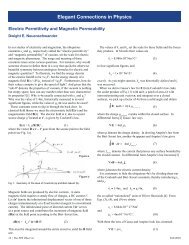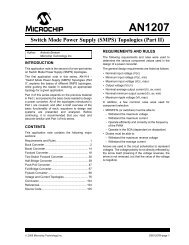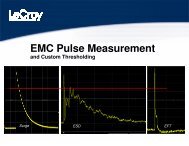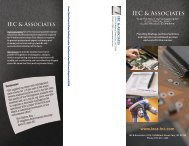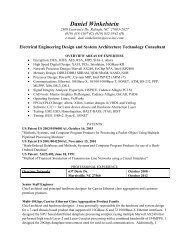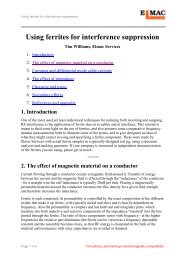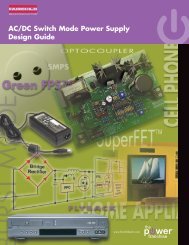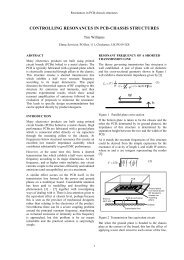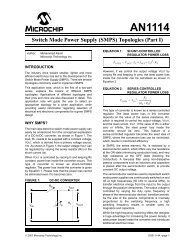Spice-Simulation Using LTspice Part 2 - IEC & Associates
Spice-Simulation Using LTspice Part 2 - IEC & Associates
Spice-Simulation Using LTspice Part 2 - IEC & Associates
- No tags were found...
Create successful ePaper yourself
Turn your PDF publications into a flip-book with our unique Google optimized e-Paper software.
Important:Receiver systems are nearly always specified in terms of „power levels“ instead of voltages. These arelogarithmic measurements so that the gain can be calculated by adding levels instead of multiplication. The mostfamiliar unit is “dBm” -- that is not a voltage but a power rating in relation to the system reference resistance:ThusP 0 = 1 milliwatt at the system resistancePower level in dBm = 10log (power value / 1mW)If the noise power “kTB” is considered in more detail, an interesting simplification can be introduced:kTB = (kT) x B = (Noise Power Densitiy) x (Bandwidth)The Noise Power Density „kT“ represents the power in every Hz; this must be multiplied by the bandwidth in orderto calculate the noise power produced. Converting this to a power level calculation the following formula shouldbe committed to memory:Each resistance produces at ambient temperature (T 0 = 290K) an available noise level and thus anavailable noise power density of-174dBm per Hz of bandwidthFor a bandwidth larger than 1 Hz:Available noise power level in dBm = -174dBm + 10log(bandwidth in Hz)As a simple example:The no load noise voltage V NOISE at the terminals of a 50 resistor for a bandwidth of 100kHz will be calculated:Noise level with matching = -174dBm + 10log(100000) = -174dBm + 50dB = -124dBmThat results in an available noise power ofP = 1mW • 10−12410= 1mW • 10−12,4= 4 • 10−16WThat will produce a voltage across the 50 resistor of:−16VNOISE = P • R = 50 • 4 • 10 W = 141nVSo the open circuit voltage is twice this value, thus 282nV.114



